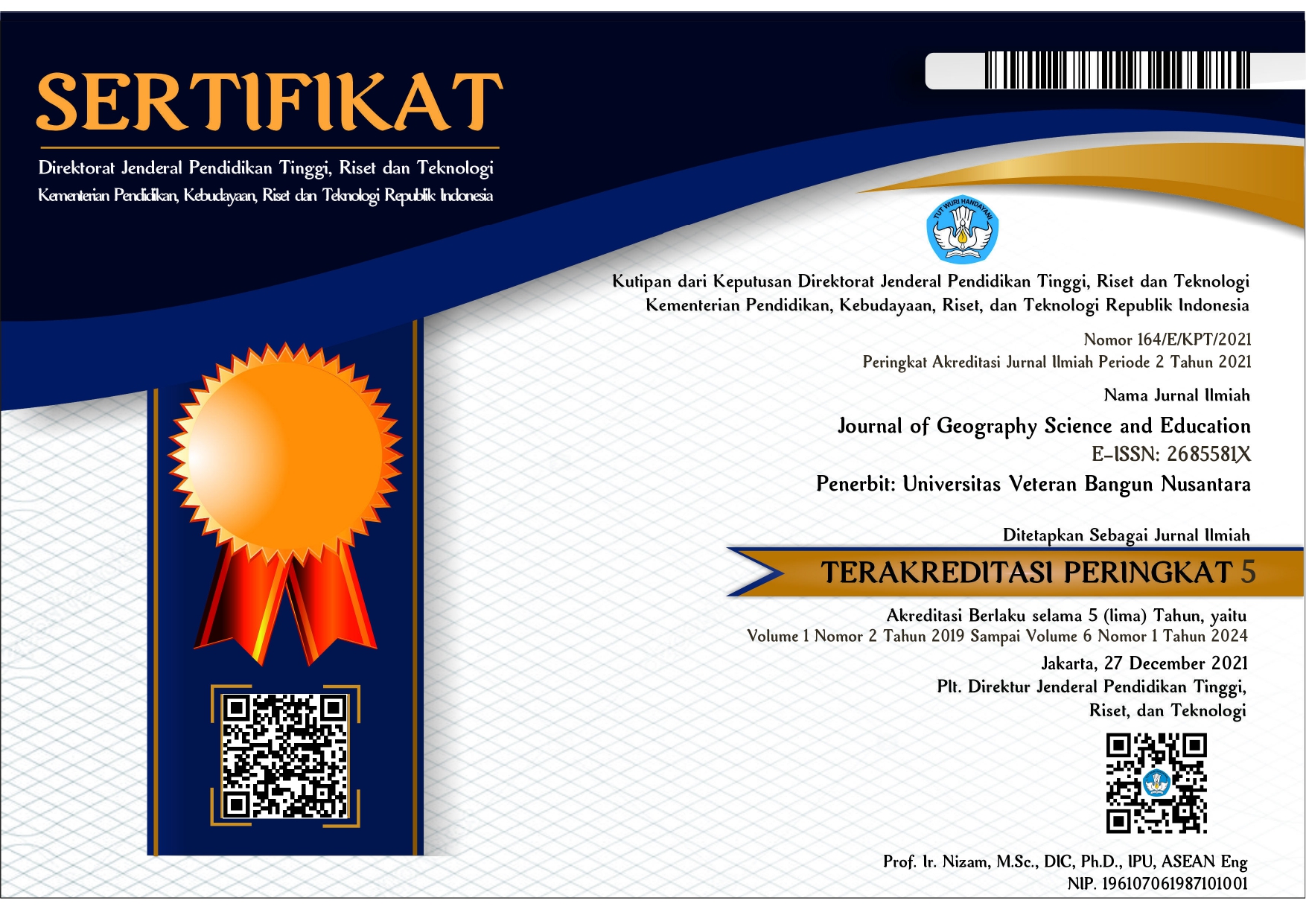Analysis of the Potential Level of Threat of Invasive Alien Species Regenerating Tree Poles in Laweyan Village
DOI:
https://doi.org/10.32585/jgse.v5i2.4610Abstract
Plants play an important role in producing organic substances and oxygen needed by other living things, but plants can potentially threaten and disrupt the diversity of other plants, causing the quality of biodiversity to decline. Plants that develop in Indonesia can come from various parts of the world, and then these foreign plants can become invasive and have a negative impact on the ecosystem. The aim of this research is to determine the potential level of threat from invasive alien species to tree regeneration in Laweyan Village and the impact of invasive alien species on the environment. The method used is sampling using satellite imagery to determine observation points and methods purposive sampling by making a 10×10 m plot. The results obtained were four plant species that were classified as invasive foreign plants in Laweyan Village, namely Leucaena leucocephala, Cnidoscolus aconitifolius, Sandoricum koetjape, Bougainvillea glabra with different levels of risk. The highest risk category is Leucaena leucocephala with a risk index of 115.2, and the second highest is Bougainvillea glabra with a risk index of 112.8. The risk level is medium, namely Cnidoscolus aconitifolius with a risk index of 100.8 and Sandoricum koetjape with a risk index of 56.28.
Downloads
Downloads
Published
How to Cite
Issue
Section
License
Copyright (c) 2023 Diva Galeh Ainindya, Tsalatsun Ikhwa Muazulfa

This work is licensed under a Creative Commons Attribution-ShareAlike 4.0 International License.
Authors who publish with the Journal of Geography Science and Education agree to the following terms:
- Authors retain copyright and grant the journal the right of first publication with the work simultaneously licensed under a Creative Commons Attribution License (CC BY-SA 4.0) that allows others to share the work with an acknowledgment of the work's authorship and initial publication in this journal.
- Authors are able to enter into separate, additional contractual arrangements for the non-exclusive distribution of the journal's published version of the work (e.g., post it to an institutional repository or publish it in a book), with an acknowledgment of its initial publication in this journal.
- Authors are permitted and encouraged to post their work online (e.g., in institutional repositories or on their website) prior to and during the submission process, as it can lead to productive exchanges, as well as earlier and greater citation of published work.










